whats the best way to glue boards together
1 / 22
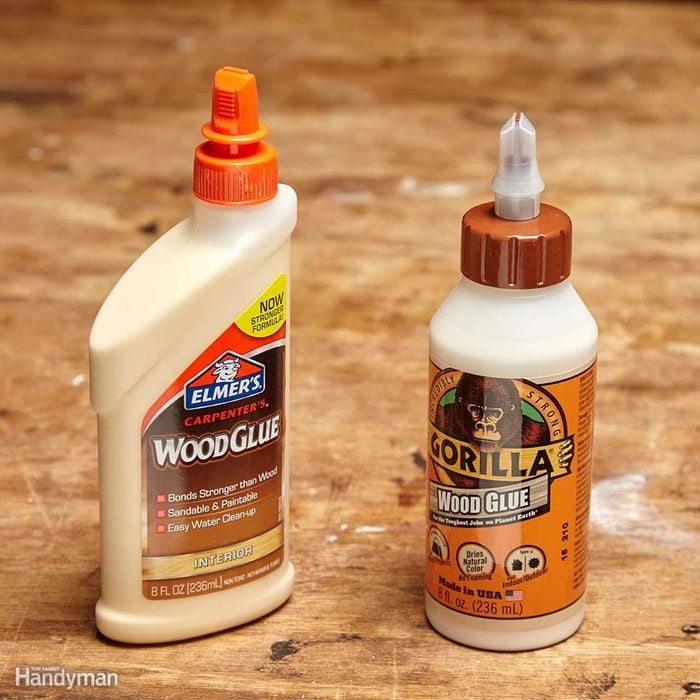
What is the Best Forest Mucilage?
Dozens of glues claim to work well on woods and a variety of other materials. But regular forest glue is the best wood glue for raw wood-to-forest joinery. About wood glues are a type of polyvinyl acetate (PVA wood mucilage). Likewise sometimes called carpenter's mucilage, wood glue is formulated to penetrate woods fibers, making glue joints that are stronger than the wood itself.
Yellow exterior glue (sometimes grayness)
Xanthous exterior glue is used for outdoor projects just not continuous submersion. Information technology will exist labeled water resistant or outside. Titebond II is one brand.
White and yellow interior glue
White and xanthous interior glue is the virtually mutual, workhorse wood glue, but it's not for outdoor use. Probond is one choice.
Liquid hide mucilage
Apply this forest mucilage for furniture repair; very long open time for assembly—upward to 30 minutes. Requires a long curing time. Titebond is ane make for liquid hide mucilage.
Polyurethane glue
Utilize it when you demand a completely waterproof glue. Also glues metal and some plastics. Long open up fourth dimension for assembly—upward to fifteen minutes; curing time: up to v hours. Gorilla Glue is one polyurethane glue option.
Epoxy
Use it when you need to make full gaps in woods and for swell force. Comes in ii parts that must be mixed just before using. Epoxy volition gum most materials, and it's waterproof. Won't launder off your skin—or anything else. Systemthree is i epoxy brand.
two / 22

How Long Does Woods Mucilage Last?
Wood glue can concluding for years. But yous may have heard that PVA wood glue goes bad afterward freezing or sitting effectually for a long time. The truth is that it might still exist OK. Endeavor stirring information technology with a stick to mix all the glue particles (don't just shake it). If information technology'due south a little thick, thin the wood gum past adding some water—up to 5 pct. If gum flows freely from the bottle and feels glace betwixt your fingers—not stringy or clumpy—it'southward probably OK to apply. But if in dubiety, throw information technology out. It's not worth taking the chance.
3 / 22
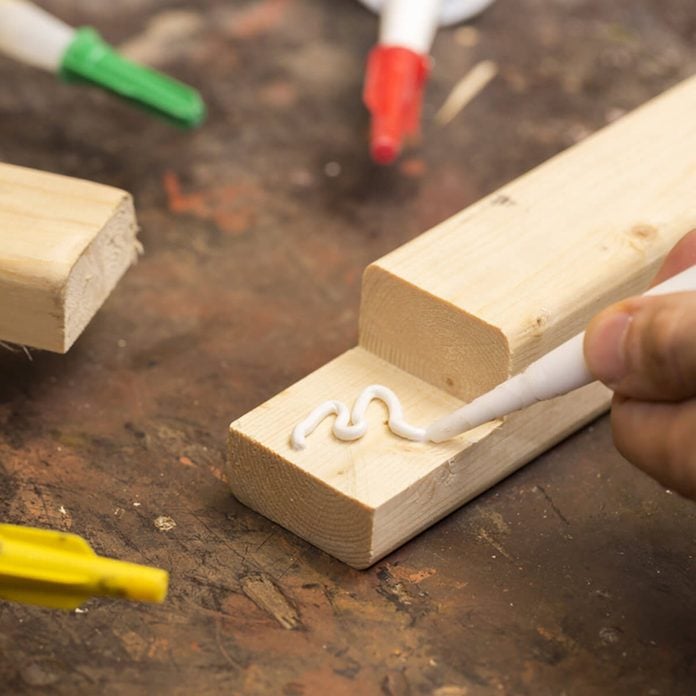
How Long Does Forest Gum Take to Dry
Woods glue brands similar Titebond recommend clamping an unstressed articulation for thirty minutes to an hour. Stressed joints need to be clamped for 24 hours and Titebond recommends that the joint non be stressed for at least 24 hours. For its polyurethane glue, Titebond recommends clamping forest for at least 45 minutes.
4 / 22

Use Waterproof Woods Gum for Outdoor Projects
If your carpentry project might become wet, utilize glue that stands upward to water. Glues labeled 'water resistant' are fine for things that'll only get wet occasionally. For most outdoor projects, however, choose 'waterproof' gum, which comes in both PVA and polyurethane formulas. Both types are plenty strong and stand up up to the weather condition, but polyurethane glue has the added do good of being able to bond materials like stone, metal and glass. It'southward messy stuff, though, then wearable gloves while using information technology.
5 / 22
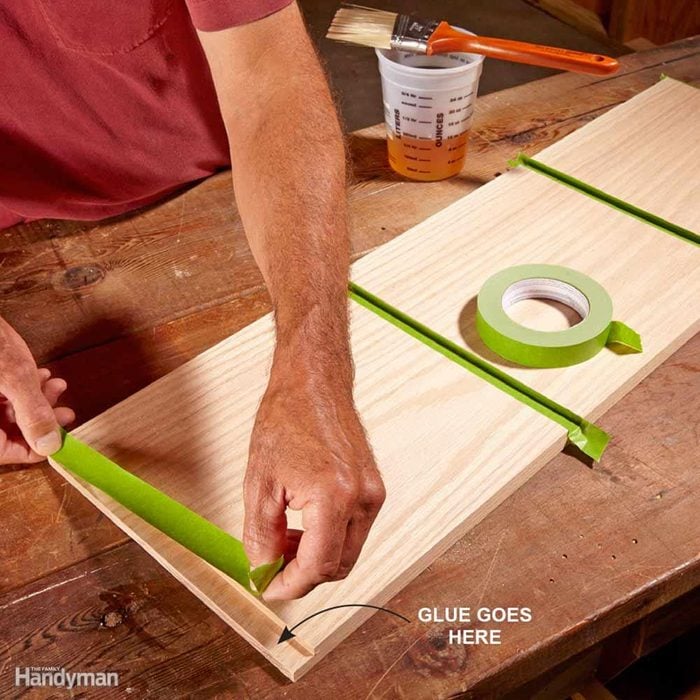
Mask Mucilage Joints Before Prefinishing
Finishing the parts of your project before yous assemble them can be a great time-saver and allow you lot to get a ameliorate-quality finish. Merely for a strong gum articulation, you have to keep the joints free of end (wood glue doesn't stick to varnish or stains very well). The solution is to utilize masking tape to the surfaces that will be glued. So remove it to betrayal raw wood when you glue up the project. Any good-quality masking tape will piece of work. If you'll be using a water-based finish, yous'll become the best results with a "no-bleed" record such as light-green Frog Tape and ScotchBlue painter's record.
6 / 22

Utilise Forest Gum With a Flux Brush
Flux brushes, available in the plumbing department of hardware stores and home centers, are just right for applying and spreading glue. They work especially well for gluing intricate joints like the ones in the coped door runway shown here. You tin store a wet brush for a few days in water and so wash and apply it over and over again.
7 / 22
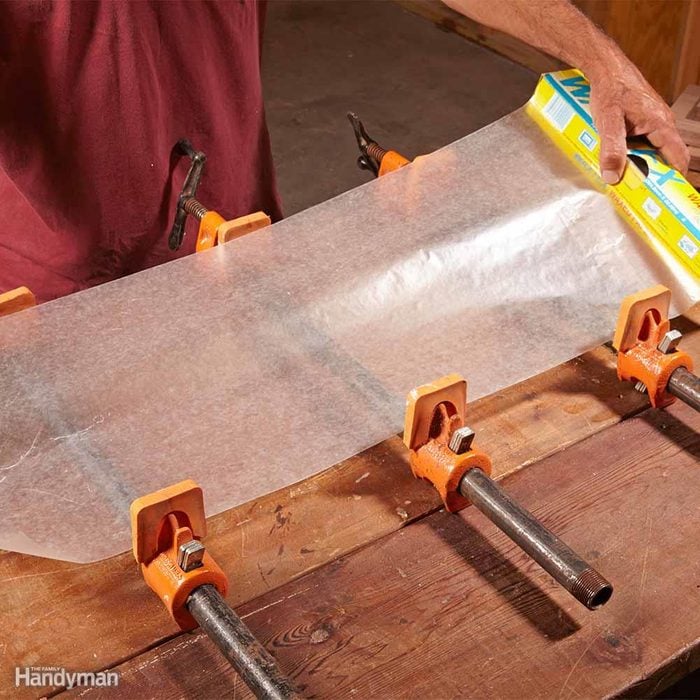
Cover Bar Clamps With Wax Paper
When y'all utilise steel bar clamps or pipe clamps, and wood glue comes in contact with the clamp, the moisture in the gum can cause the steel to go out a nighttime mark on your wood. Lay a canvas of wax paper over the clamps to foreclose this "dark spot" trouble. It volition also catch glue drips that would otherwise get all over your clamps and workbench.
8 / 22
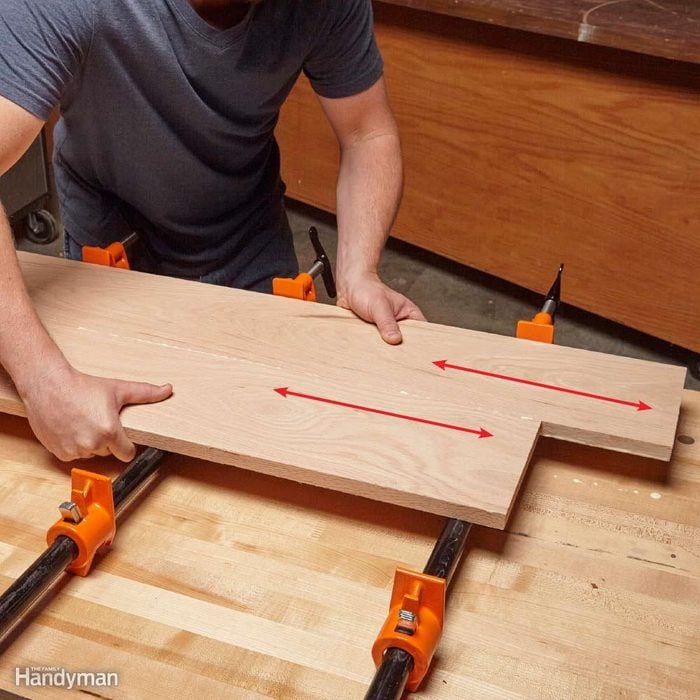
Rub the Joint
1 skilful mode to ensure a stiff glue articulation is to use the 'rub joint' method. Only apply gum to the edges of one or both boards and rub them together to aid spread the glue evenly before clamping.
9 / 22
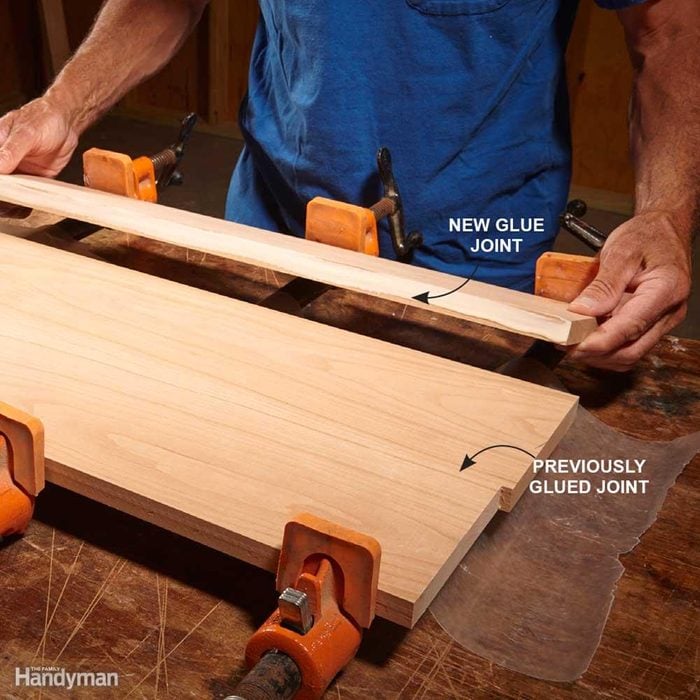
Add I Board at a Time
When you're gluing several boards together, it tin exist hard to become all the height surfaces perfectly aligned. Here's a tip that solves the problem. Rather than glue and clamp all the boards at once, add together one board at a fourth dimension. Let the glue articulation set for about 20 to 30 minutes, then release the clamps and add together some other board. This method will take a little longer. But it makes it a lot easier to go along all of the boards' tiptop surfaces flush, which makes for much easier flattening and sanding of the surface.
10 / 22
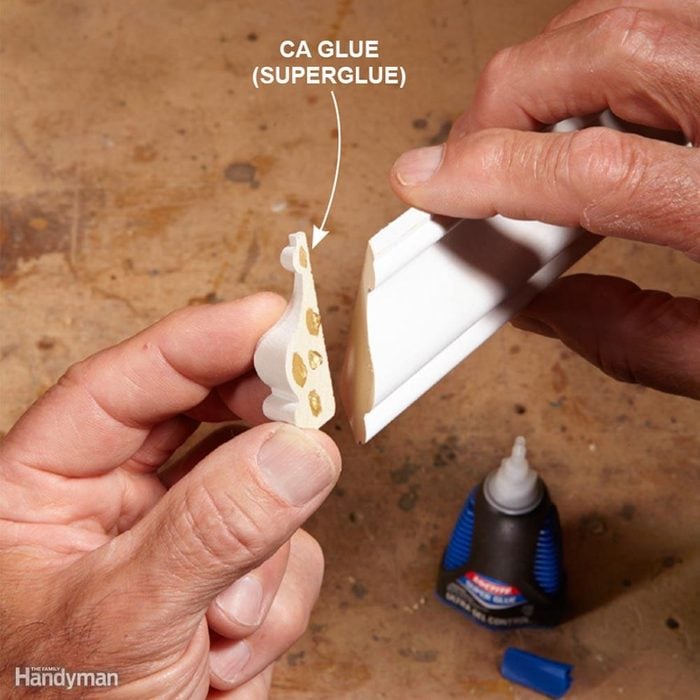
Adhere Small Pieces With Superglue
Of course yous achieve for a superglue (cyanocacrylate mucilage, or CA) to fix a broken teacup handle. But did yous know that it works on wood, likewise? In fact, CA glue is really handy for attaching pocket-size trim pieces that would be hard to clench. Just put iii or four drops onto the parts and stick them together. We similar the gel version of CA glue because it doesn't run off and make a mess.
11 / 22
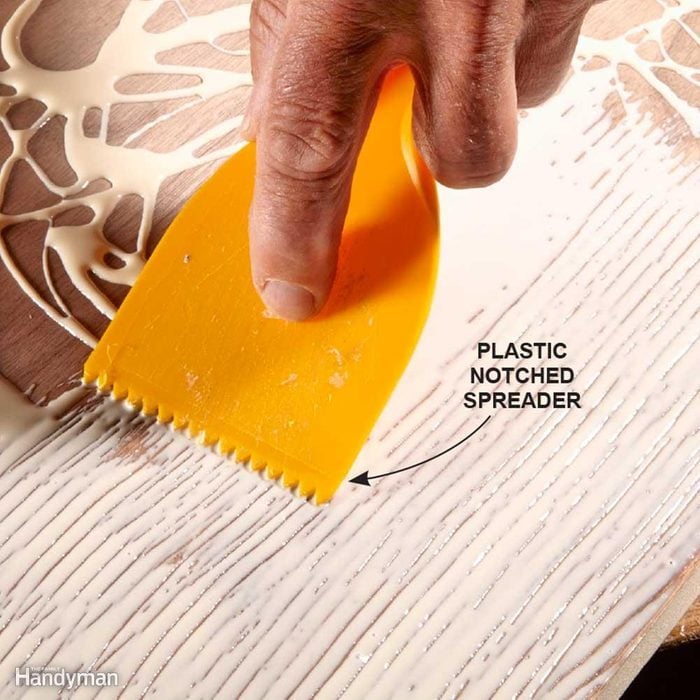
Spread Glue With a Notched Trowel
When you're gluing large surfaces, an inexpensive notched plastic trowel works dandy for spreading the glue. To discover one, await in the flooring or tile section of the hardware store or home centre. If y'all're fortunate enough to have a pair of "pinking" shears in the family unit sewing handbasket, you lot can make our own spreader from an expired credit carte.
12 / 22
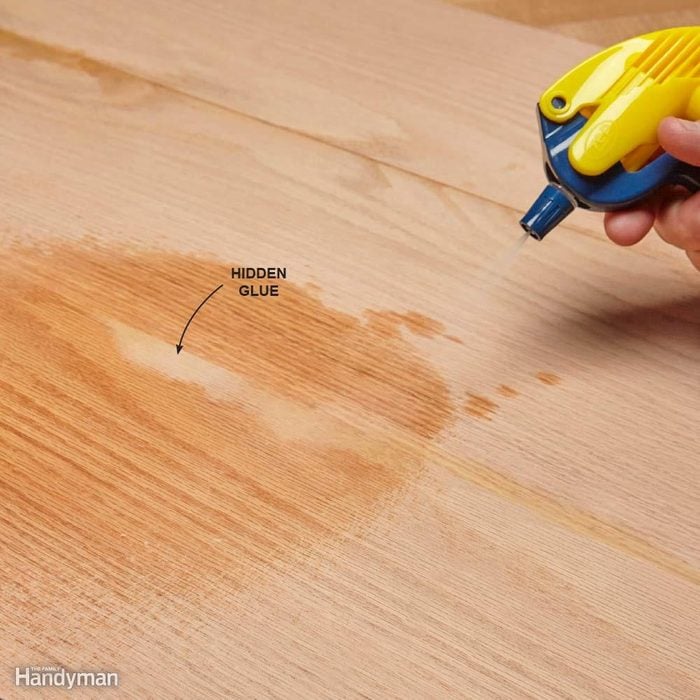
Water Finds Hidden Gum
Once squeezed-out mucilage has been removed, there's still a chance that some is hiding. And if you lot don't find it now, yous'll see it later on when you apply stain or finish. Spray some warm water most glue joints to make hidden glue more than visible. The water will also soften the dried glue, making it easier to scrape off.
13 / 22
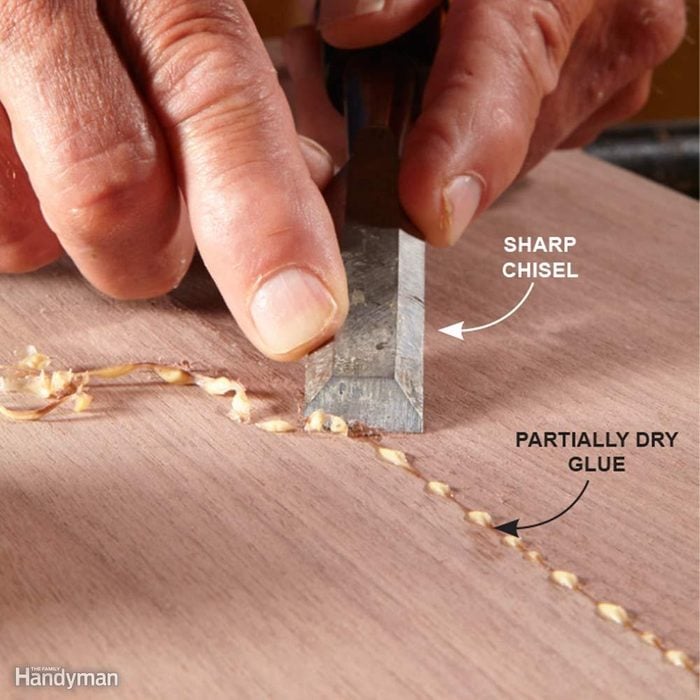
How To Remove Glue Squeeze-Out
Look at whatsoever woodworkers' forum and you'll probable find a contend about the best way to remove gum clasp-out. Some woodworkers insist that y'all should clean information technology upward immediately with a damp rag. Others let it dry completely, so scrape information technology off. Nosotros think that in nearly cases the all-time method is to wait about xxx to threescore minutes—merely until the mucilage turns a darker color and changes to a gel—and and then shave it off with a sharp chisel. This will remove almost all of the glue without making a mess. You may still have a little cleanup to do, but it'due south a lot less work than cleaning up wet mucilage or removing hard mucilage.
xiv / 22
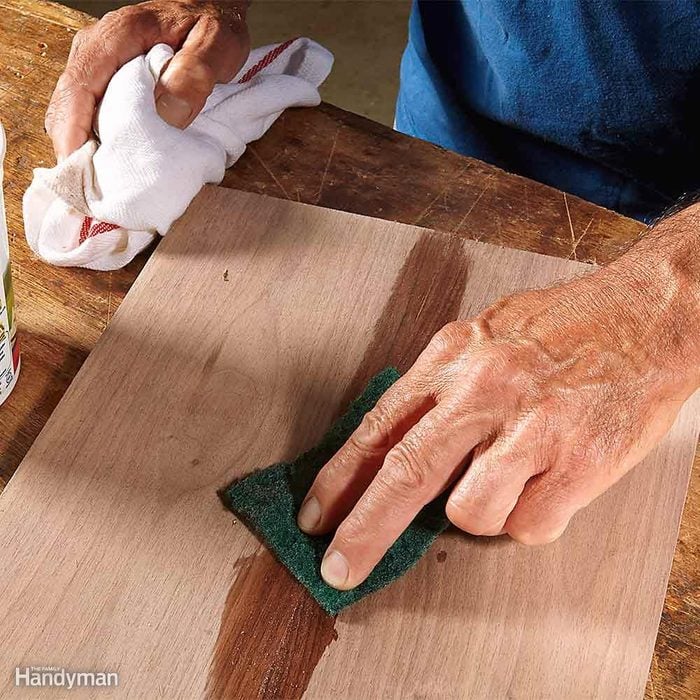
Remove Excess Woods Glue With an Abrasive Pad
It can be difficult to remove excess mucilage with a rag. And if you don't get it all off the surface when information technology'due south wet, the dried glue can show upward as lite spots when y'all finish your project. But a synthetic abrasive pad, dampened with h2o, works perfectly to remove the glue. Dip the pad in a container of water. Unlike a rag, which is hard to rinse glue from, the pad has a loose synthetic weave that releases glue easily. Subsequently rinsing out the pad, milkshake it to remove near of the water. Then utilise it to scrub off excess wood gum. When y'all're done, dry the surface with a clean rag. Green abrasive pads are found with the cleaning supplies at grocery stores, hardware stores and home centers.
15 / 22
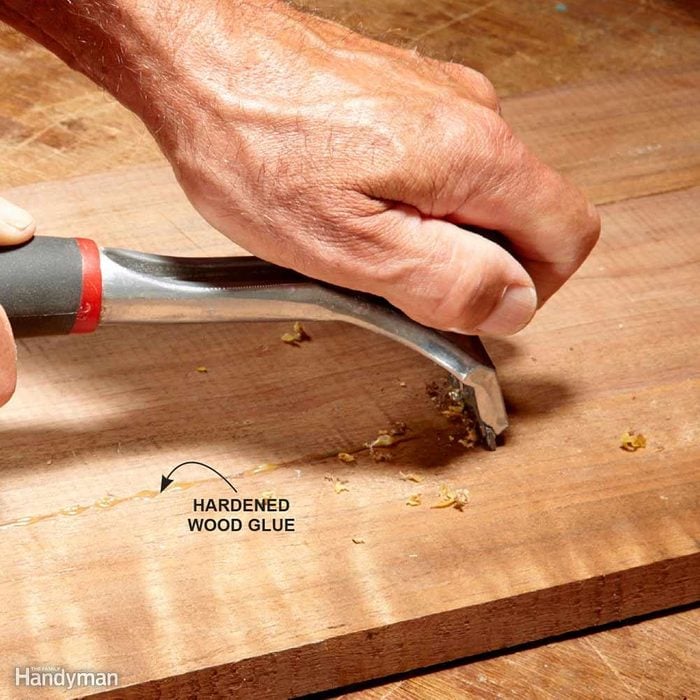
Remove Hardened Wood Gum With a Paint Scraper
We've all been there. You glue upwardly your project and then quit for the dark. The next day you discover the stone-hard glue and realize that you forgot to scrape off the mucilage squeeze-out. Don't despair. A abrupt pigment scraper makes fast work of hardened glue. Either a sharp steel scraper or, better all the same, a carbide paint scraper volition pop off all those glue chaplet in a heartbeat.
16 / 22
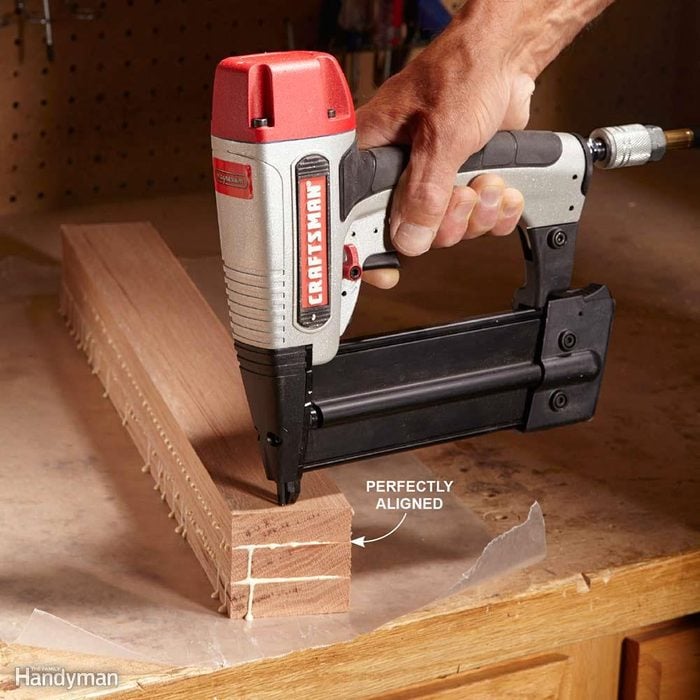
Tack, Then Clamp
Wood glue makes boards slippery, and so it tin can be hard to keep them lined up correctly while yous use clamps. An easy solution is to hold the parts in alignment with a few strategically placed brads earlier you employ the clamps. For leg glue-ups like we show here, cut your parts extra long and place the brads where they'll get cutting off during the finishing process. Otherwise, just place brads where the filled holes won't be too visible.
17 / 22
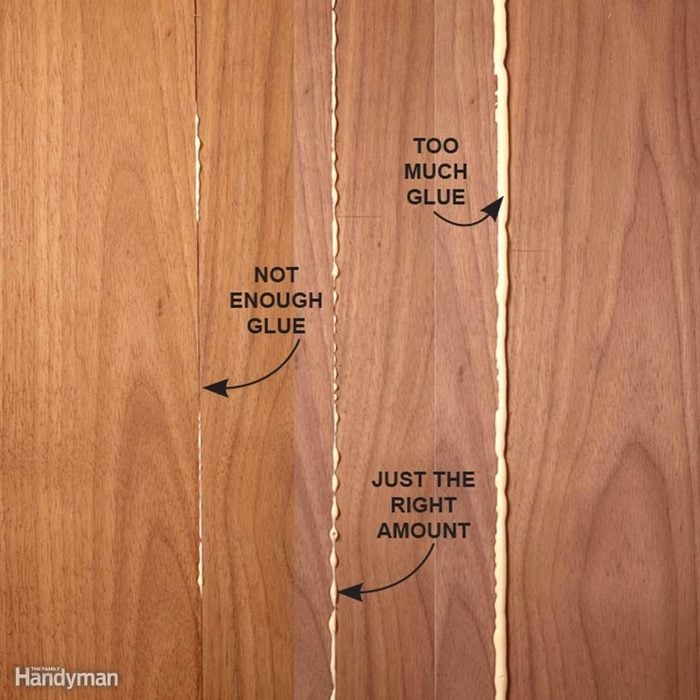
Use the Right Amount of Mucilage
With a little experience, you'll develop a feel for how much mucilage is just enough. Too little gum creates a "starved joint," which will be weak. Too much glue makes a mess and wastes glue. With practice, you'll know but how much to utilise. You should see a continuous line of pocket-size glue chaplet. When this perfect glue joint sets a picayune, you'll find it easy to scrape off the jelled excess, and you'll have very little cleanup to do.
18 / 22
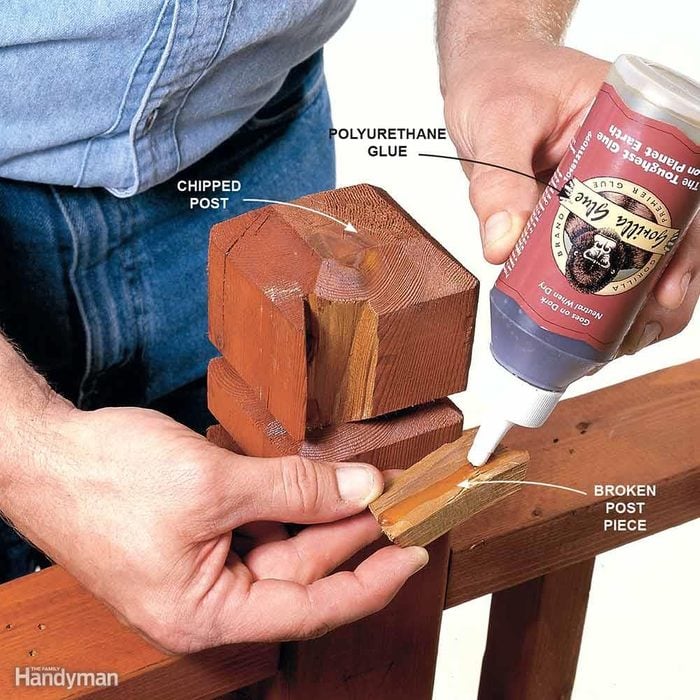
Picking the Best Exterior Forest Glue
An exterior-form yellow woodworking glue may work fine, especially if it'south protected past a coat of outdoor pigment or somewhere out of the pelting. However, for joints that become a lot of weather, use polyurethane gum; it's one of the best wood glue products because information technology's fully waterproof and bonds wood and other materials well. It'due south not gap-filling, so exist certain to go a adept fit and clamp it.
19 / 22
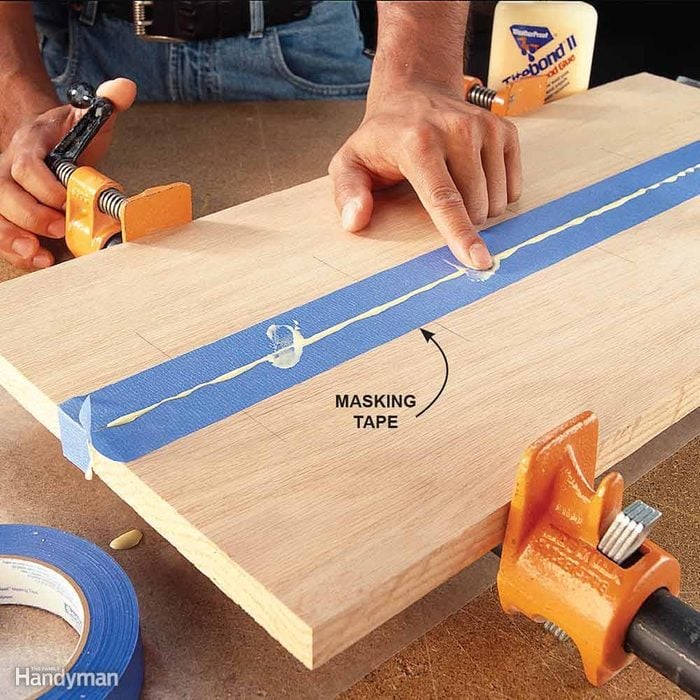
Apply Tape to Control Glue Squeeze-Out
Glue squeeze-out soaks into the fibers of raw wood, leaving blemishes when you later on apply the finish.The usual solution for this is to clean it off with a wet rag or sponge. Simply besides much water around the articulation can weaken the bond. It'south better to stick down masking tape along both edges of the articulation before gluing.The backlog glue volition so squeeze out onto the record instead of the wood, and y'all can just peel the gum away when information technology'due south dry out.
20 / 22
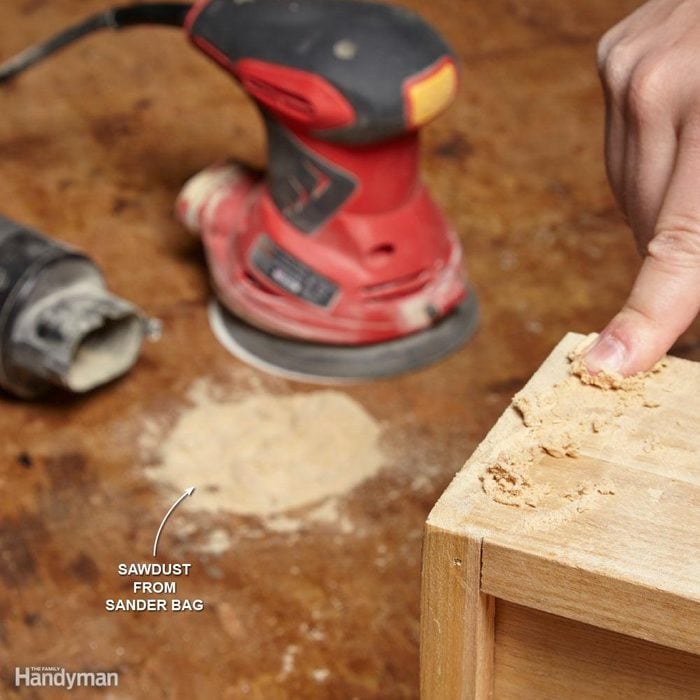
DIY Wood Filler
When you need forest filler that matches the colour of your project, mix some fine sawdust and glue together until it forms a paste, which you can use to make full modest gaps and cracks. For best results, employ sawdust from the aforementioned species of wood as your projection; you lot can get some from the bag on your electric sander. Just don't try this flim-flam for large gaps or patches—they'll stick out like a sore thumb.
21 / 22
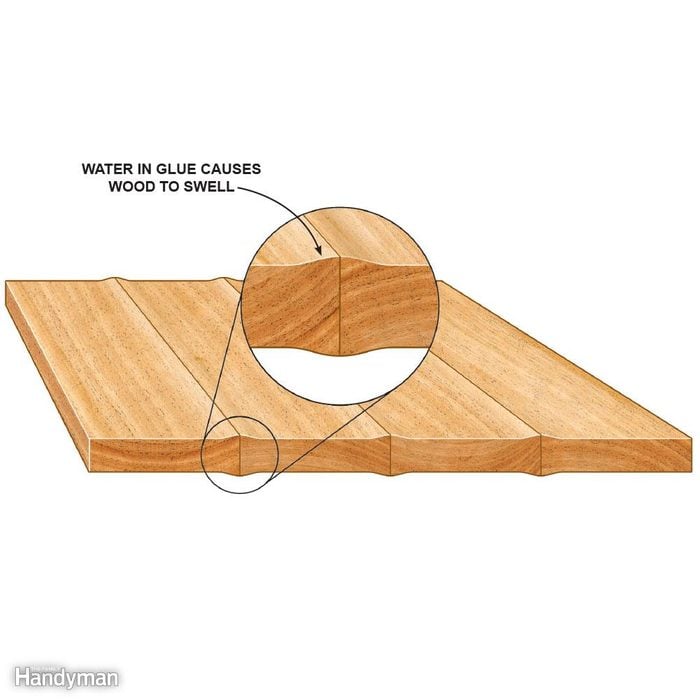
Avert Sunken Joints
PVA glue has lots of water in information technology, and that h2o will cause the forest edges at glue joints to neat. If you airplane or sand glued-up panels too before long, you could exist left with sunken joints after the wood dries and shrinks to its original state. Near water-based glues accomplish full cure in about 24 hours, but it can have several days for swollen glue joints to compress back to size. If you're gluing upward a fine piece of furniture that yous hope will become a family heirloom, expect a few days after gluing upwardly your project before sanding or planing.
22 / 22
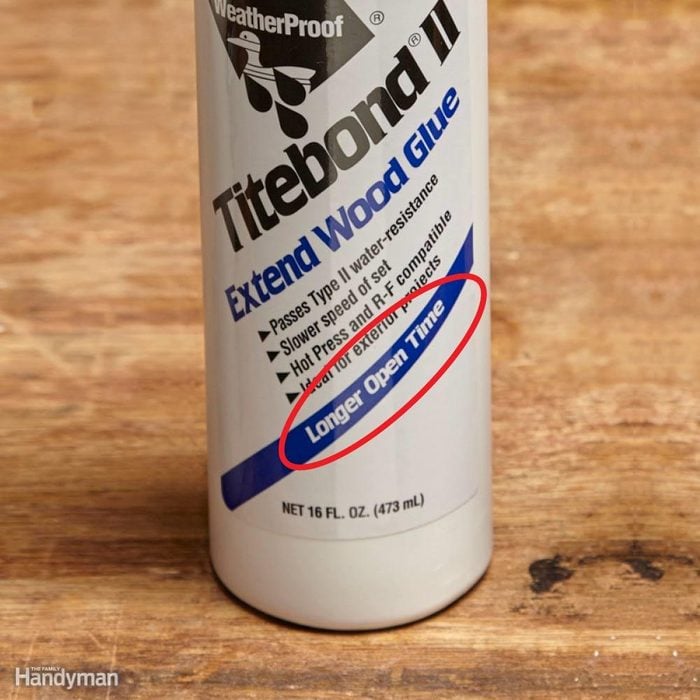
Boring-Setting Forest Glue Buys You lot Time
Almost wood glues set up quickly, which can be a approving or a curse. Sometimes yous want a quick bail, but on a complicated glue-upwards, you lot might desire more time before the mucilage starts to set upwards. Slow-setting glues have labels that say 'longer assembly time' or 'longer open time.'
Originally Published: July xvi, 2019
Source: https://www.familyhandyman.com/list/how-to-glue-wood/
0 Response to "whats the best way to glue boards together"
Post a Comment